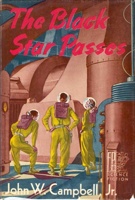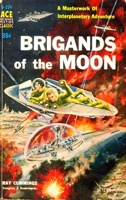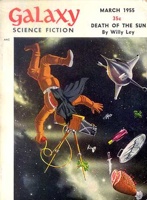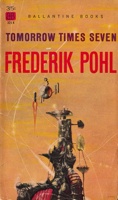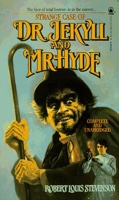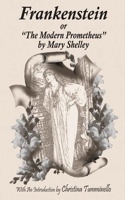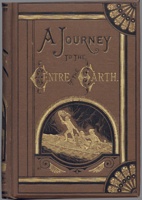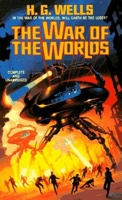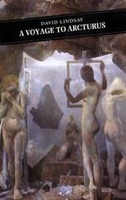- The Black Star Passes John W Campbell HTML | Zip
John Wood Campbell, Jr. (June 8, 1910 – July 11, 1971) was an important science fiction editor and writer. As a writer he was first influential under his own name as a writer of super-science space opera and then under the name Don A. Stuart, a pseudonym he used for moodier, less pulpish stories. However, Campbell’s primary influence on the genre was as the editor of Astounding Science Fiction, a post that he held from late 1937 until his death.
- Brigands of the Moon Ray Cummings HTML | Zip
Ray Cummings (Raymond King Cummings) was an author of Science Fiction, rated one of the “founding fathers of the Science Fiction pulp genre”. He was born August 30, 1887 in New York and died January 23, 1957 in Mount Vernon. Cummings worked with Thomas Edison as a personal assistant and technical writer from 1914 to 1919. His most highly regarded work was the novel The Girl in the Golden Atom published in 1922. His career resulted in some 750 novels and short stories, using also the pen names Ray King, Gabrielle Cummings, and Gabriel Wilson. 8. Project Mastodon Clifford Simak HTML | Zip
Clifford Donald Simak (August 3, 1904 – April 25, 1988) was a leading American science fiction writer. He won three Hugo awards and one Nebula award, as well as being named the third Grand Master by the SFWA in 1977. 7. Pellucidar Edgar Rice Burroughs HTML | Zip
Edgar Rice Burroughs (September 1, 1875 – March 19, 1950) was an American author, best known for his creation of the jungle hero Tarzan, although he produced works in many genres. Pellucidar is a fictional Hollow Earth milieu invented by Tarzan creator Edgar Rice Burroughs for a series of action adventure stories. In a notable crossover event between Burroughs’ series, there is a Tarzan story in which the Ape Man finds his way into Pellucidar.
- The Day of the Boomer Dukes Frederik Pohl HTML | Zip
Frederik George Pohl, Jr. (born November 26, 1919) is an influential American science fiction writer, editor and fan, with a career spanning over sixty years. From about 1959 until 1969, Pohl edited Galaxy magazine and its sister magazine if, winning the Hugo for if three years in a row. His writing also won him three Hugos and multiple Nebula Awards. He became a Nebula Grand Master in 1993.
- Dr Jekyll and Mr Hyde Robert Louis Stevenson HTML | Zip
Robert Louis (Balfour) Stevenson (November 13, 1850 – December 3, 1894), was a Scottish novelist, poet, and travel writer, and a leading representative of Neo-romanticism in English literature. He was greatly admired by many authors, including Jorge Luis Borges, Ernest Hemingway, Rudyard Kipling and Vladimir Nabokov.
- Frankenstein Mary Shelley Text | Zip
Mary Wollstonecraft Shelley (née Godwin) (30 August 1797 – 1 February 1851) was an English romantic/gothic novelist and the author of Frankenstein, or The Modern Prometheus. She was married to the Romantic poet Percy Bysshe Shelley. 3. Triplanetary E. E. “Doc” Smith HTML | Zip
E. E. Smith, also Edward Elmer Smith, Ph.D., E.E. “Doc” Smith, Doc Smith, “Skylark” Smith, and (to family) Ted (May 2, 1890 – August 31, 1965) was a food engineer (specializing in doughnut and pastry mixes) and early science fiction author who wrote the Lensman series and the Skylark series, among others. He is sometimes referred to as the “father of Space Opera.”
- A Journey to the Centre of the Earth Jules Verne HTML | Zip
Jules Gabriel Verne (February 8, 1828–March 24, 1905) was a French author who pioneered the science-fiction genre. He is best known for novels such as Journey To The Center Of The Earth (1864), Twenty Thousand Leagues Under The Sea (1870), and Around the World in Eighty Days (1873). Verne wrote about space, air, and underwater travel before air travel and practical submarines were invented, and before practical means of space travel had been devised.
- The War of the Worlds H G Wells HTML | Zip
Herbert George Wells (September 21, 1866 – August 13, 1946), better known as H. G. Wells, was an English writer best known for such science fiction novels as The Time Machine, The War of the Worlds, The Invisible Man, The First Men in the Moon and The Island of Doctor Moreau. He was a prolific writer of both fiction and non-fiction, and produced works in many different genres, including contemporary novels, history, and social commentary. Bonus: A Voyage to Arcturus David Lindsay HTML | Zip
A Voyage to Arcturus is a novel by the Scottish writer David Lindsay. First published in 1920, it combines fantasy, philosophy and science fiction in an exploration of the nature of good and evil and their relationship with existence. It has been described by the critic and philosopher Colin Wilson as the “greatest novel of the twentieth century” and was a central influence on C.S. Lewis’s Space Trilogy. This article is licensed under the GFDL. It uses material from the Wikipedia articles: Cummings, Campbell, Simak, Burroughs, Pohl, Stevenson, Shelley, Smith, Verne, Wells, and Arcturus. Read More: Twitter Facebook YouTube Instagram
